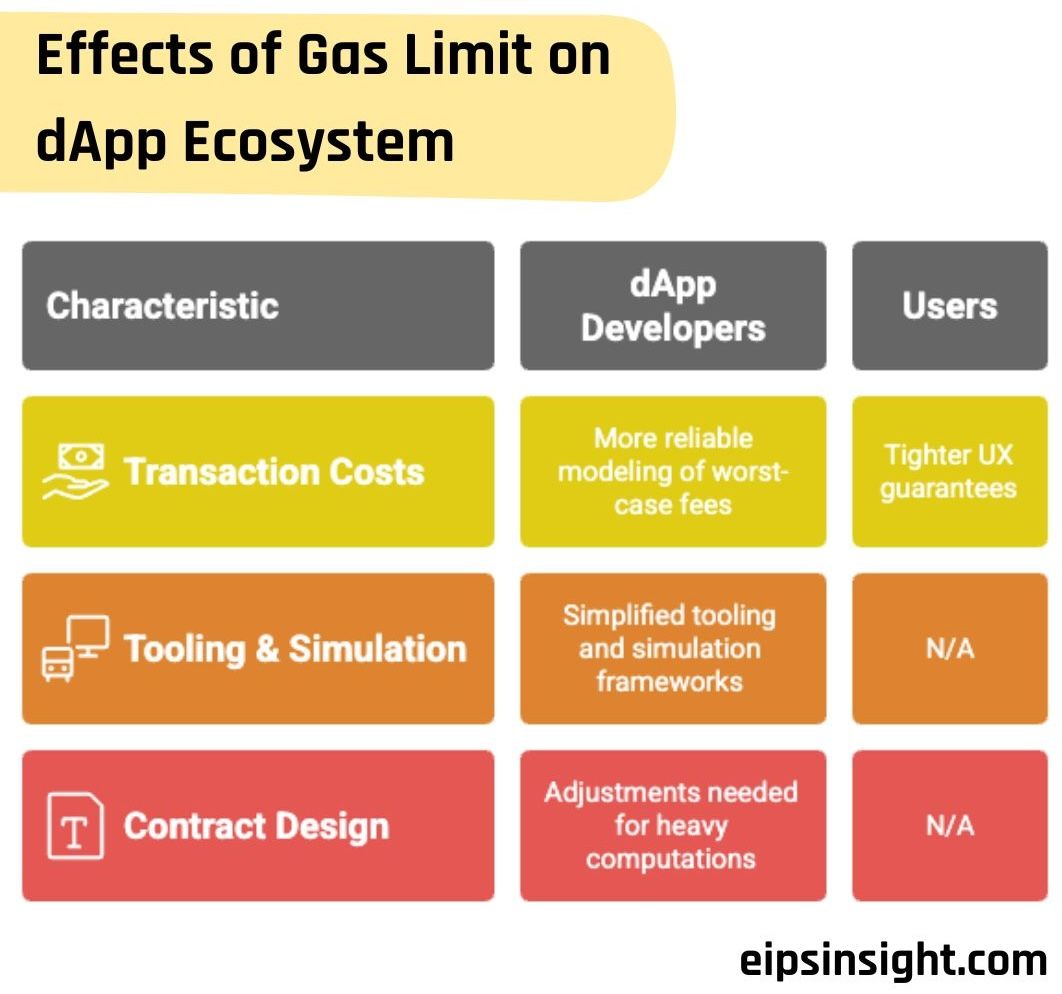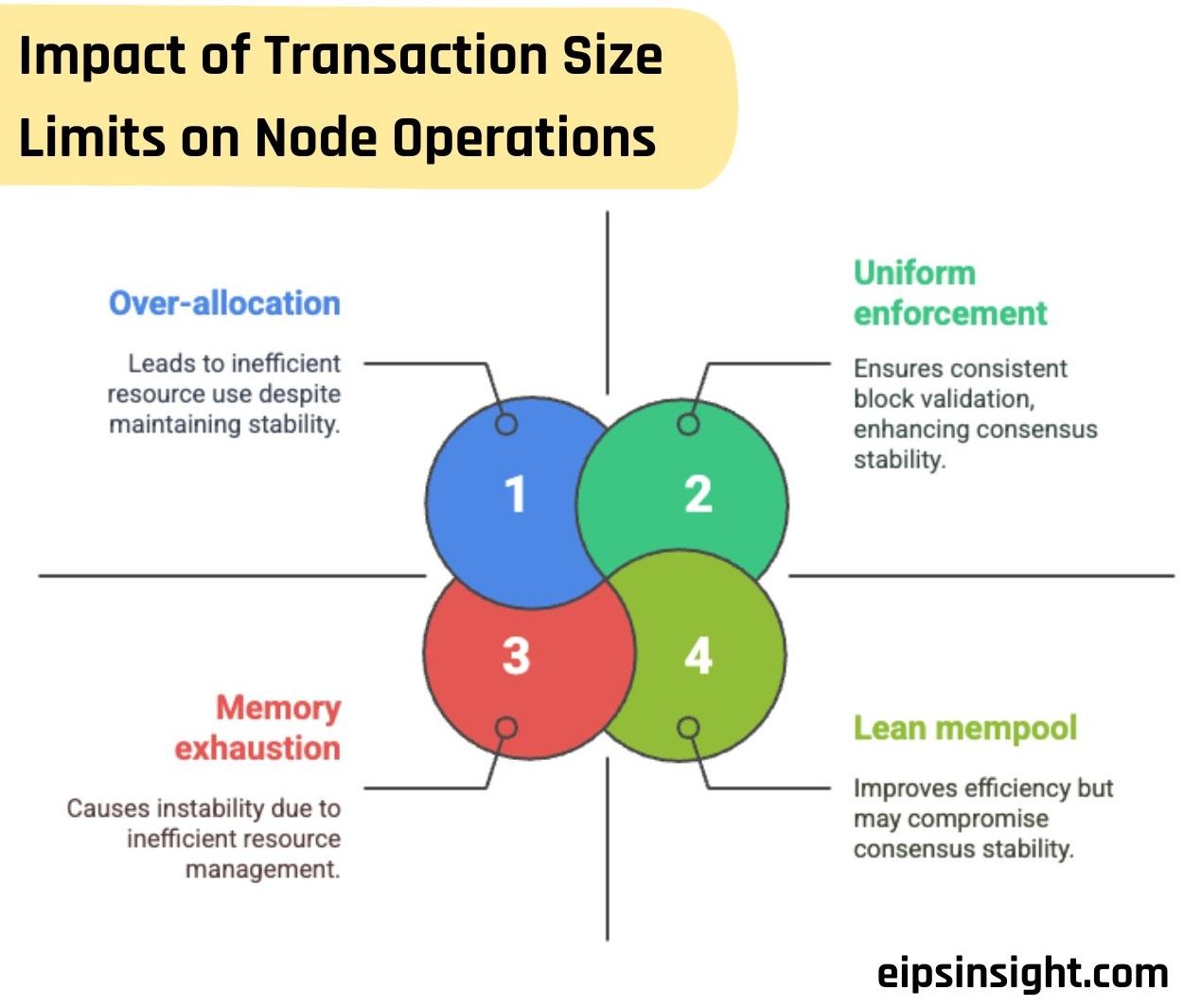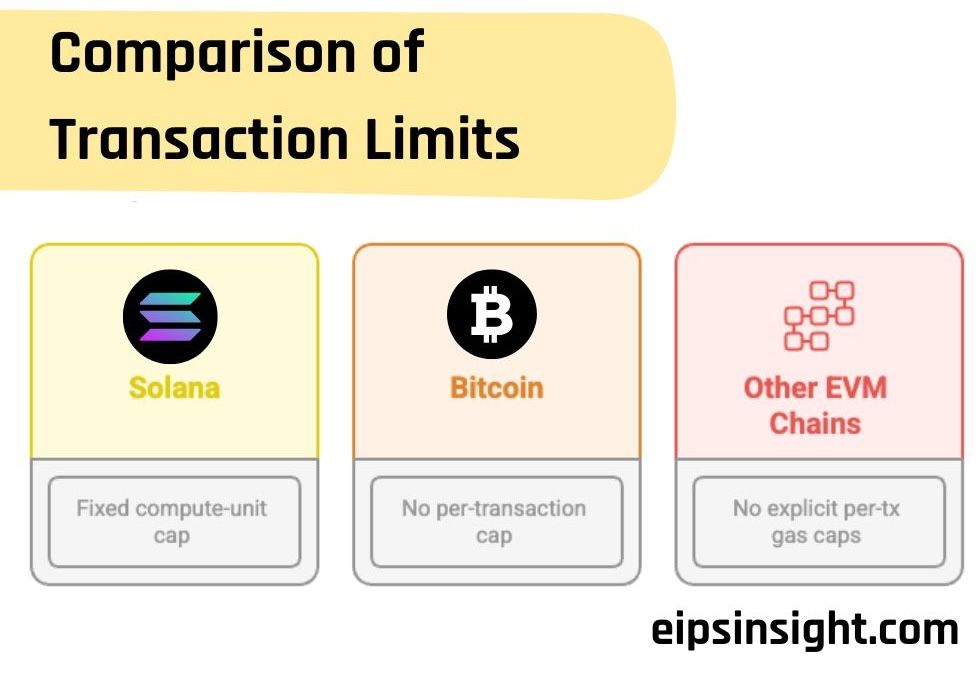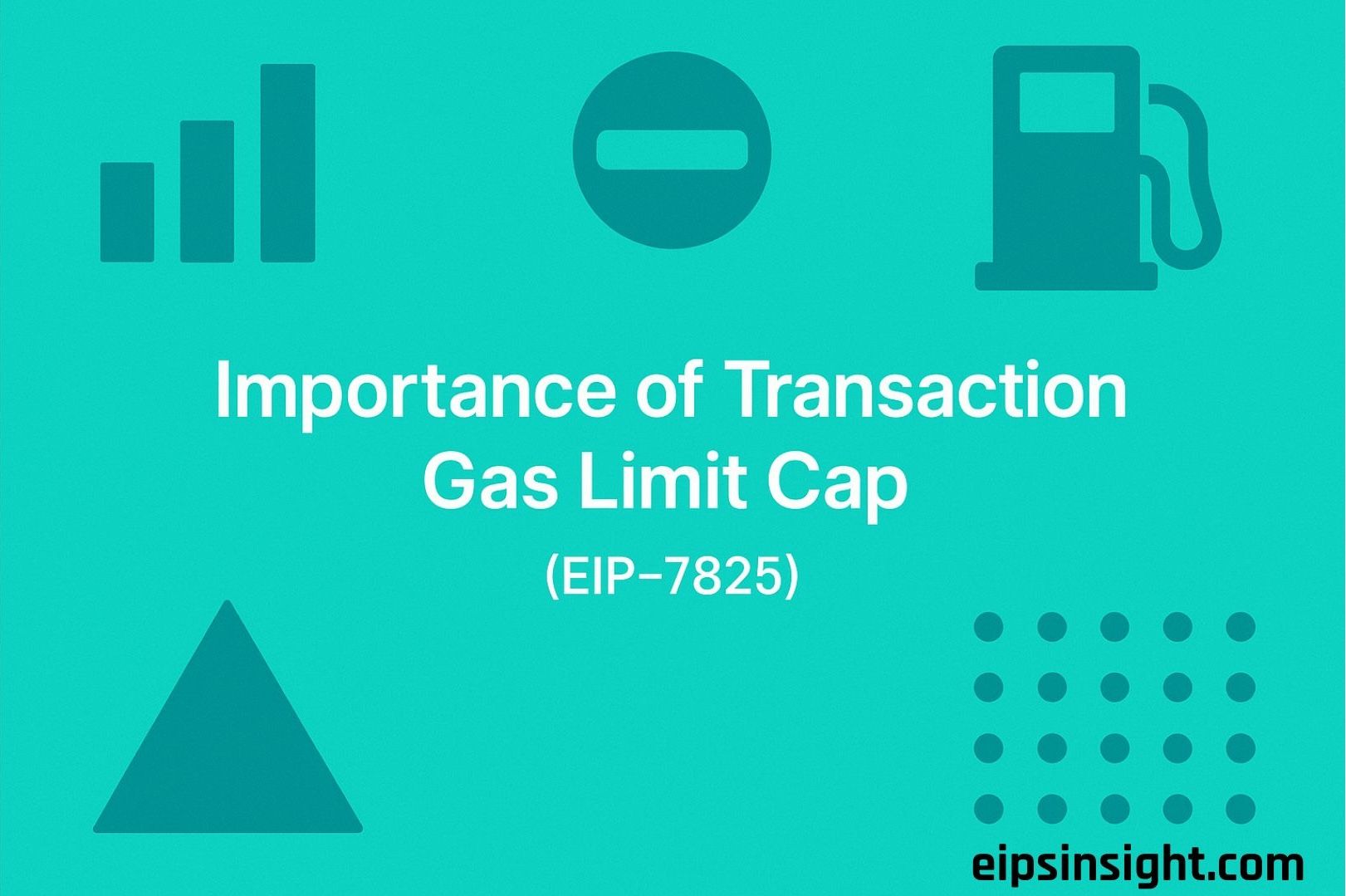Importance of Transaction Gas Limit Cap (EIP-7825)
As Ethereum scales, unchecked gas consumption threatens network health and user trust. EIP-7825 tackles this by enforcing a 30 million gas cap per transaction at the protocol level, rejecting oversized transactions at the RPC, mempool and consensus stages. This EIP helps in avoiding DoS attempts, curbs state bloat and brings predictability to fee estimation and node resource planning.
In this blog, we will dive into why gas limits matter, how EIP-7825 works and what its rollout means for developers, node operators and the broader ecosystem.
- Why Transaction Gas Limits Matter?
- What Is EIP-7825?
- How the 30 Million Gas Cap Works?
- Impact on the Ecosystem
- Community Feedback & Discussion
- How Other Chains Handle Gas Limits?
- Conclusion
- Next Steps for Adoption
Why Transaction Gas Limits Matter?
Every Ethereum transaction consumes “gas,” a unit that prevents spam & enforces economic costs on computation. However, when transactions are unbounded or consume excessively large amounts of gas, they can undermine network reliability and user experience.
Denial of Service (DoS) vulnerabilities arise because malicious actors can craft and send extremely gas-heavy transactions that clog the network. These oversized transactions tie up block space and processing queues, slowing down or even halting normal operations until nodes can reject or process them.
Verifying large transactions also imposes a heavy burden on every node. Each oversized transaction demands more CPU cycles and memory for EVM execution, increasing node sync times and raising hardware requirements. Over time, this leads to a steeper barrier to entry for node operators and exacerbates centralization pressures.
Finally, unpredictable user costs become a major concern. Developers and end users struggle to estimate transaction fees accurately when there is no upper bound on gas consumption. A single transaction that unexpectedly spikes its gas usage can lead to exorbitant fees, degrading the overall user experience and undermining confidence in the network.
What Is EIP-7825?
EIP-7825 introduces a hard cap of 30 million gas per transaction at the protocol level. Rather than relying solely on collectively adjusted block limits, this per-tx cap ensures no single transaction can exceed the defined gas ceiling, regardless of miner or validator settings.
The cap is enforced at three stages:
- RPC Input Validation – Clients immediately reject any RPC call attempting to broadcast a transaction with gas > 30_000_000.
- Txpool Admission – Transactions entering the local transaction pool undergo the same gas-cap check, preventing oversized transactions from consuming memory or blocking processing queues.
- Block Inclusion – During block assembly and validation, any transaction exceeding the cap causes the block to be considered invalid, triggering consensus-level rejection.
How the 30 Million Gas Cap Works?
Ethereum nodes introduce a per transaction gas ceiling of 30 million gas to prevent any single transaction from consuming unbounded resources. Rather than relying solely on fluctuating block limits set by miners, this cap is enforced at the protocol level, ensuring uniform behavior across RPC interfaces, mempools, and consensus validation.
By bounding worst case execution, the network gains predictability in resource usage, which directly enhances stability and security. When a signed transaction arrives, the client’s mempool immediately checks its gasLimit against 30 million.
If the transaction exceeds the cap, it is rejected with a standardized error before ever entering memory intensive queues. This early rejection protects RPC endpoints from expensive RLP decoding and EVM preparations, preserving CPU and memory for valid payloads even under attack.
During block assembly, miners skip any transactions exceeding the cap, guaranteeing clean blocks. Full nodes then revalidate each included transaction.
Clients return a uniform JSON RPC error whenever a user attempts to send an oversized transaction. Looking ahead, while 30 million is hard coded for the Fusaka fork, the design anticipates dynamic cap adjustments via governance or forks and client side heuristics like per account rate limits.
Moreover, having a known upper bound simplifies formal verification and parallel execution strategies, as clients can preallocate thread pools and exhaustively test EVM behavior under all valid gas limits.
Impact on the Ecosystem
(I) Effects on dApp Developers & Users:
With a firm upper bound of 30 million gas per transaction, dApp teams can more reliably model worst case fee scenarios. This predictability leads to tighter UX guarantees, as fee estimation interfaces will not unexpectedly spike when a user crafts a complex contract call, reducing user frustration and failed submissions.
Local testnets and simulation frameworks such as Hardhat or Ganache also adopt the same cap, ensuring that on chain behavior mirrors local tests. This alignment minimizes last minute failures during deployment and streamlines the development lifecycle.

Finally, developers whose applications perform very heavy computations such as large on chain loops or bulk storage writes must now split logic across multiple transactions or leverage batching patterns under the cap. Although this adds some development overhead, it prevents accidental DoS vectors in production environments and results in more robust attack resilient contracts.
(II) Implications for Node Operators & Validators:
Node operators benefit from known per transaction limits when planning CPU & memory provisioning. Rather than over allocating resources just in case, teams can right size their infrastructure around the 30 million gas ceiling, optimizing hosting costs without sacrificing performance.
Mempool health improves as well because oversized transactions are rejected outright at admission time, keeping the pool leaner, reducing memory exhaustion risk, and maintaining faster RPC responsiveness under load. Because this cap is enforced uniformly across all major clients, blocks containing any offending transaction are atomically invalidated by every implementation, eliminating split brain scenarios where one client might accept a block that another rejects.

The result is fewer unexpected chain reorganizations due to gas limit mismatches & enhanced overall consensus stability.
Community Feedback & Discussion
In the Ethereum Magicians forum, contributors raised several key points regarding EIP 7825. Members like jochem-brouwer requested clearer specification of where the 30M cap applies whether at the JSON RPC, txpool, or consensus layer and urged the addition of “validation everywhere” language to eliminate ambiguity.
Others, including benaadams, suggested lowering the limit to 16.7 M so that the gasLimit fits within a 3 byte RLP field, enabling ultra fast invalidation during RLP decoding. Concerns were also voiced by bbjubjub, who noted that splitting large “ULTRA TX” batch patterns into ten 30M segments could introduce extra intrinsic gas overhead, potentially complicating future account abstraction flows.
How Other Chains Handle Gas Limits?
In the broader blockchain landscape, different networks handle resource limits in varied ways.
- Solana, for example, enforces a fixed compute-unit cap per transaction that closely mirrors the spirit of EIP-7825’s gas cap; developers must tune their on-chain programs to fit within these predefined budgets, preventing runaway resource consumption.
- Bitcoin takes a different approach, relying on a strict block-size limit (currently 4 MB for witness blocks) rather than a per-transaction cap; here, mempools use fee thresholds to throttle oversized transactions.

- Meanwhile, most EVM-compatible Layer-2 solutions and side-chains lack explicit per-transaction gas caps, instead leaning on aggregate block limits or dynamic fee markets to self-regulate usage.
Conclusion
The introduction of a 30 million gas cap significantly enhances network security & stability by bounding worst case execution. This hard ceiling makes denial of service and state bloat attacks materially harder to execute, as no single transaction can force nodes into excessive work. In turn, developers gain a more predictable UX: with a known per transaction limit, they can reliably model fee costs, and node operators can right-size infrastructure based on guaranteed upper bounds.
Next Steps for Adoption
First, client teams must finalize and merge the cap check logic across all major implementations (Geth, Nethermind, Besu & Erigon). Next, the proposal should land on Fusaka devnets to validate real world behavior under load, confirming that large transactions are correctly rejected and that performance remains stable. Finally, post launch metrics on txpool health, block acceptance rates & developer feedback should be collected and analyzed, forming the basis for any subsequent cap tuning or spec enhancements.
